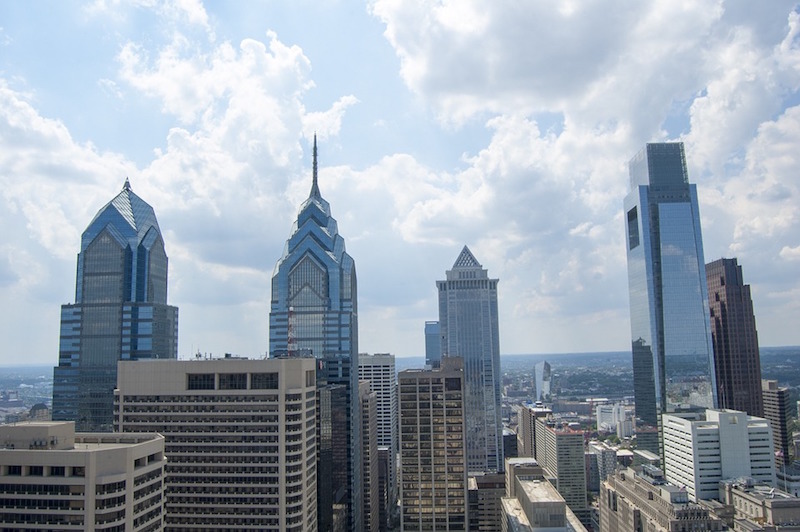Alan Greenberger, FAIA, former Philadelphia Deputy Mayor and Chairman of the City Planning Commission, has been selected to receive the 2017 Thomas Jefferson Award. The Thomas Jefferson Award recognizes excellence in architectural advocacy and achievement. Greenberger will be honored at the AIA Conference on Architecture 2017 in Orlando.
Lured from his role as a principal at Philadelphia’s MGA Partners by former Philadelphia Mayor Michael Nutter, Greenberger quickly assumed a dual role as deputy mayor and chairman of the City Planning Commission. Responsible for the Department of Commerce as well as oversight of planning and 10 additional agencies, Greenberger spearheaded an audacious initiative to rewrite the city’s antiquated and convoluted zoning code and create Philadelphia2035, a comprehensive plan for the city’s renaissance. During his tenure, he also completed and approved plans for all 37 miles of the city’s waterfront and led Philadelphia to its greatest redevelopment and population influx since the mid-20th century.
When the Nutter administration reached its two-term limit, Greenberger left full-time public office. He now shares his knowledge and wealth of experience with the next generation of design professionals as the Distinguished Teaching Professor and Lind Fellow in the Department of Architecture and Interiors at Drexel University. Later this year, he will assume the role of department head. Greenberger remains active with the city he helped become a UNESCO World Heritage site in 2015, serving as chairman of the Philadelphia Art Commission. An independent body, it is tasked with design oversight of all public facilities, signage, and artwork.
Related Stories
Building Team | Feb 24, 2015
Call for entries: 2015 Giants 300 survey
The annual Giants 300 Report ranks the top AEC firms in commercial construction, by revenue.
Industrial Facilities | Feb 24, 2015
Starchitecture meets agriculture: OMA unveils design for Kentucky community farming facility
The $460 million Food Port project will define a new model for the relationship between consumer and producer.
University Buildings | Feb 23, 2015
Future-proofing educational institutions: 5 trends to consider
In response to rapidly changing conditions in K-12 and higher education, institutions and school districts should consider these five trends to ensure a productive, educated future.
Office Buildings | Feb 23, 2015
The importance of quiet and the consequences of distraction
Recent work style studies show that the average knowledge worker spends 25-35% of their time doing heads-down focused work. Once thrown off track, it can take some 23 minutes for a worker to return to the original task.
Modular Building | Feb 23, 2015
Edge construction: The future of modular
Can innovative project delivery methods, namely modular construction, bring down costs and offer a solution for housing in urban markets? FXFOWLE’s David Wallance discusses the possibilities for modular.
| Feb 23, 2015
6 trends changing the way city dwellers live
Across the cultural grid, from food to retail to transportation, America's urban areas are already undergoing a major metamorphosis. Here are the six major trends shaping our cities, from Fast Company.
Green | Feb 23, 2015
State of the green union, and the next big shift in sustainability
The history of the green movement offers cues that we are on the precipice of another significant shift in the green union.
| Feb 23, 2015
Where are the iconic green buildings?
What does a green building look like? How would you know one if you saw one? Maybe a trivial question to some, but of great interest to architects, designers, and other members of the Building Team as the rapid evolution of sustainable buildings continues apace.
Sports and Recreational Facilities | Feb 21, 2015
Pumped-up recreation centers help build body, mind, and spirit
Adopting facility layouts from Asian and European models, today’s sports and recreational buildings are becoming social hubs that accommodate a variety of community needs.
University Buildings | Feb 20, 2015
Penn strengthens campus security by reviving its surrounding neighborhood
In 1996, the University of Pennsylvania’s sprawling campus in Philadelphia was in the grip of an unprecedented crime wave. But instead of walling themselves off from their surrounding neighborhoods, the school decided to support the community.















